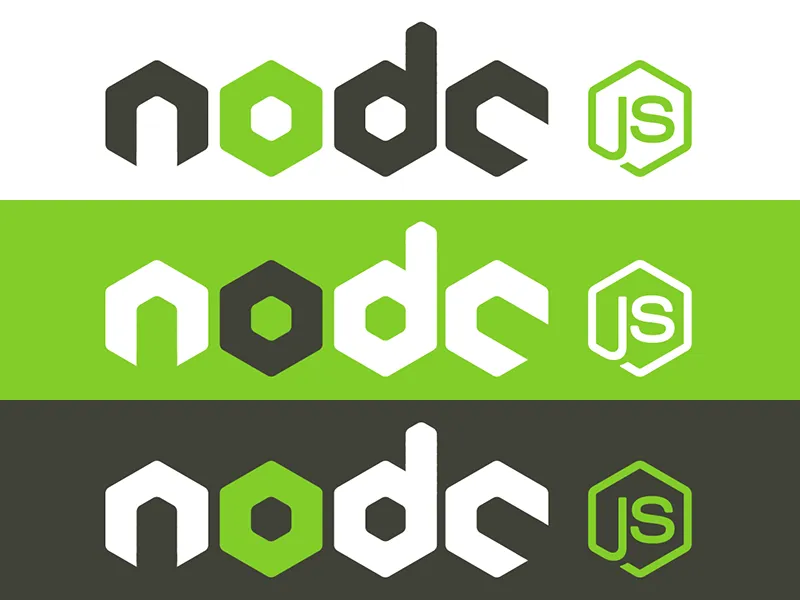Three years after the initial spark, the Node.JS revolution burns brighter than ever. This JavaScript runtime environment, renowned for its speed, agility, and vibrant ecosystem, has become the go-to weapon for developers crafting the future of the web. But trends, like shooting stars, have a habit of blazing fast and fading quicker. So, what celestial bodies will illuminate the Node.JS firmament in 2024 and beyond? Buckle up, intrepid coders, as we embark on a deep dive into 7 trends poised to reshape the digital landscape:
1. Serverless Ascending: From Servers to Shadows
Remember the days of server sprawl, battling scaling demons, and praying to uptime gods? Serverless architecture, powered by the likes of AWS Lambda and Google Cloud Functions, is banishing these server-side spectres. Node.JS plays a starring role in this serverless symphony, allowing developers to compose symphonies of code without the cacophony of infrastructure management. This pay-per-use model slashes maintenance costs, boosts developer agility, and unleashes the true potential of serverless — a trend poised for an encore performance in the years to come.
2. Microservices Mania: From Monoliths to Microcosms
Monolithic applications, once the digital dinosaurs of the web, are being dethroned by the nimble cavalry of microservices architecture. This approach, with its modular, independent services, fosters faster development, easier scaling, and improved resilience — a dream for complex, ever-evolving applications. Node.JS, with its lightweight nature and microservice-friendly frameworks like Express and NestJS, is the perfect architect for these miniature masterpieces. Expect to see microservices powering everything from e-commerce platforms to social media giants, with Node.JS as the trusty hammer and chisel.
3. Real-Time Reigns Supreme: From Static Pages to Living Experiences
The web is no longer a static canvas; it’s a pulsating, dynamic organism. Real-time interactions, the lifeblood of modern applications, are driving user engagement and pushing the boundaries of what’s possible. Node.JS, with its asynchronous nature and event-driven architecture, is the real-time rockstar of the development world. From chat applications to collaborative editing platforms, Node.JS empowers developers to build dynamic, interactive experiences that keep users glued to their screens, living and breathing in the digital moment.
4. GraphQL Grabs the Spotlight: From RESTful to Resourceful
REST APIs have served us well, but GraphQL is the new sheriff in town. This query language gives clients exactly what they need, reducing data overfetching and boosting performance like a digital Marie Kondo. Node.JS, with its GraphQL-friendly libraries like Apollo Server, is making this shift seamless. Expect to see GraphQL powering increasingly complex APIs and driving a more efficient, data-centric web, where information flows freely and precisely, like a well-tuned orchestra.
5. The Cloud Craze Continues: From On-Premise to Omnipresent
The cloud is no longer a futuristic fad; it’s the present reality. And just like oxygen is to lungs, so is the cloud to Node.JS applications. From deploying serverless functions to scaling applications on-demand, Node.JS and the cloud are a match made in developer heaven. This trend shows no signs of slowing down, with cloud giants like AWS, Azure, and GCP offering ever-more enticing Node.JS-powered solutions, making the cloud the omnipresent stage for the next generation of web applications.
6. Edge Computing Takes Flight: From Core to Frontier
Data, the lifeblood of the digital age, is generated everywhere. Processing it closer to the source, like a local farmer tending to their crops, can be a game-changer. Edge computing, with its distributed architecture, is bringing computation closer to the edge of the network, reducing latency and unlocking new possibilities. Node.JS, with its lightweight footprint and ability to run on resource-constrained devices, is a natural fit for edge environments. Expect to see Node.JS powering everything from smart sensors to wearables, pushing the boundaries of what’s possible at the network’s edge, transforming the way we interact with the digital world around us.
7. The TypeScript Takeover: From Dynamic to Defined
JavaScript has long been criticized for its lack of type safety, like a ship sailing the digital seas without a compass. TypeScript, a superset of JavaScript with optional static typing, is addressing this head-on, providing a map and compass for developers. Node.JS, with its robust TypeScript support, is enabling developers to write more maintainable, predictable code, reducing bugs and headaches like a magic potion. This trend is gaining traction, especially in large-scale projects where code quality and stability are paramount, ensuring smooth sailing for the development process and enhanced confidence for long-term maintenance. The rise of TypeScript signifies a shift towards a more disciplined and structured approach to JavaScript development, a welcome change for teams working on complex applications. With Node.JS as the sturdy vessel and TypeScript as the guiding star, developers can navigate the ever-changing waters of the web with greater certainty and precision.
Beyond the Technical Tides: The Human Touch
While these trends paint a vibrant picture of the future, it’s crucial to remember that technology alone is just a collection of tools. The true magic lies in the hands of the developers who wield them. Just like the most exquisite sailboat needs a skilled captain to harness the wind and navigate the waves, the most powerful technologies need human ingenuity, creativity, and empathy to truly come alive. As we explore these trends and build the future of the web, let’s not forget the human element. Let’s strive to build applications that not only leverage the power of Node.JS, but also make the web a more accessible, inclusive, and ultimately, a better place for everyone.
Conslusion
The beauty of the Node.JS community lies in its collaborative spirit. Developers from all corners of the globe come together to share knowledge, contribute to open-source projects, and help each other navigate the ever-evolving landscape of web development. This collaborative spirit is essential for propelling these trends forward and ensuring that Node.JS continues to be a powerful force for good in the digital world. As we chart our course into the future, let’s remember that we’re not alone on this voyage. We have a vibrant community at our side, ready to lend a hand and ensure that the Node.JS revolution continues to flourish.
So, Node.JS enthusiasts, let’s set sail! Let’s code, create, and collaborate. Let’s leverage the power of these trends, not just to build technically impressive applications, but to shape the web into a platform that empowers, connects, and inspires. With the wind of innovation in our sails and the human touch as our compass, the future of the web with Node.JS promises to be an exciting and transformative journey.





